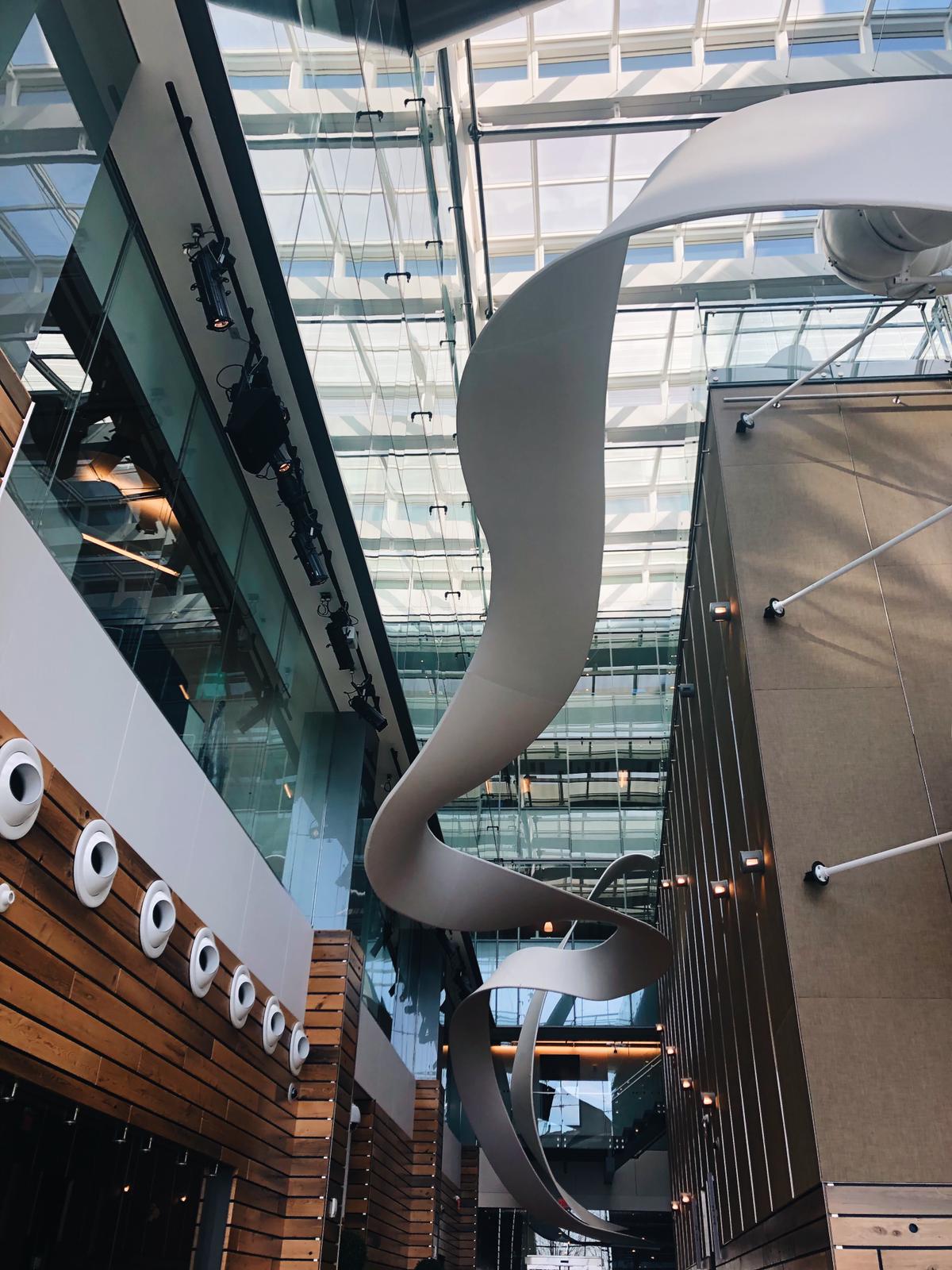In the next three blog posts, we want to give you a first look at the results of our research. Remember that we split up into 6 research groups and each of the teams dealt with 2 dimensions? If you want to refresh your memory of those different dimensions and what they are about, you can do so here.
In each article, two groups will introduce their topics.
Group 1 – Solitaire Architecture and Aestheticization of Districts
Let’s start off with Solitaire Architecture and Aestheticization of Districts. This topic has been dealt with by Paula, Lina, Daniela, and Tobi:
„Our preparation in Germany mainly consisted of desk research regarding the analysis of each city’s netnographics and econometrics.
The netnographic analysis of a city deals with its perception online, so we decided to use both Tripadvisor and Google’s „city guides“ as our main sources here. We also analyzed posts and hashtags on social media. For the econometric aspect of our desk research, we tried to find out more about the price development of real estate, the visitor numbers of landmarks, etc. We also made plans for our research on site by getting in touch with different experts and sending out interview requests. On site, we would conduct lots of interviews not only with experts but also locals and tourists. And in order to gather more information about how people interact with landmarks, we decided to go on an observational photo tour through the city.
What did we find out, you ask? Well, this is a very short summary of what we’ve learned:
Based on interviews with representatives from the Akin Collective in Toronto and Atéliers Créatifs in Montreal, we can say that those two cities approach artist residency and studio rental space in different ways. It became very clear that Mannheim & Toronto both identify multiculturalism as a strength and as a source for creativity. We saw that German sights are usually rather old, whereas Canadians’ are new. Also, Mannheim’s and Heidelberg’s landmarks were better integrated into the everyday life of the cities’ residents. In every city, we saw that city representatives were aware of the lack of space for residents and artists. Besides that, we found out that the creative industries in Toronto, Heidelberg & Mannheim have developed from being a bottom-up movement to being a top-down movement. In Montreal, this change has not taken place yet.“
Group 2 – Uniqueness and Media Representation
„We are Joanna, Sara, Hannah and Annika and we asked ourselves what makes a city unique? How did history influence the way creativity is displayed in the city today? And what kind of media representation is focused in each city to attract tourists and citizens?
During desk research before the fieldtrips we mainly found out about historical milestones, did homepage analyses and focused on organizing personal interviews with representatives of different historical places in each city. Furthermore, we developed surveys to ask whether people knew about the city being a UNESCO Creative City. Additionally, we asked the people to describe the city in one word. Working with the same strategic in every place, we now not only have lots of one-word-descriptions we can put together, but also the availability to compare each city with another in a general overview or under specific aspects.
From this point on we can highlight a few key findings already:
– In terms of history, Toronto always wanted to fill a role of an existing place, while Montréal was always guided by their French pride and heritage.
– UNESCO has a different status in North America compared to Europe. While citizens form Mannheim and Heidelberg were aware of the commission’s existence, people in Toronto and Montréal only knew about the label when working in the branches.
– Hence why the UNESCO label achieved more of an indirect change in the Canadian cities by giving the opportunity to use bigger networks now.
– In terms of media representation, we found out that Toronto is more represented over the world, however doesn’t push any further images of the city than the common sights. Mannheim and Heidelberg on the other hand are active in trying to highlight the UNESCO label more on advertisement campaigns“
